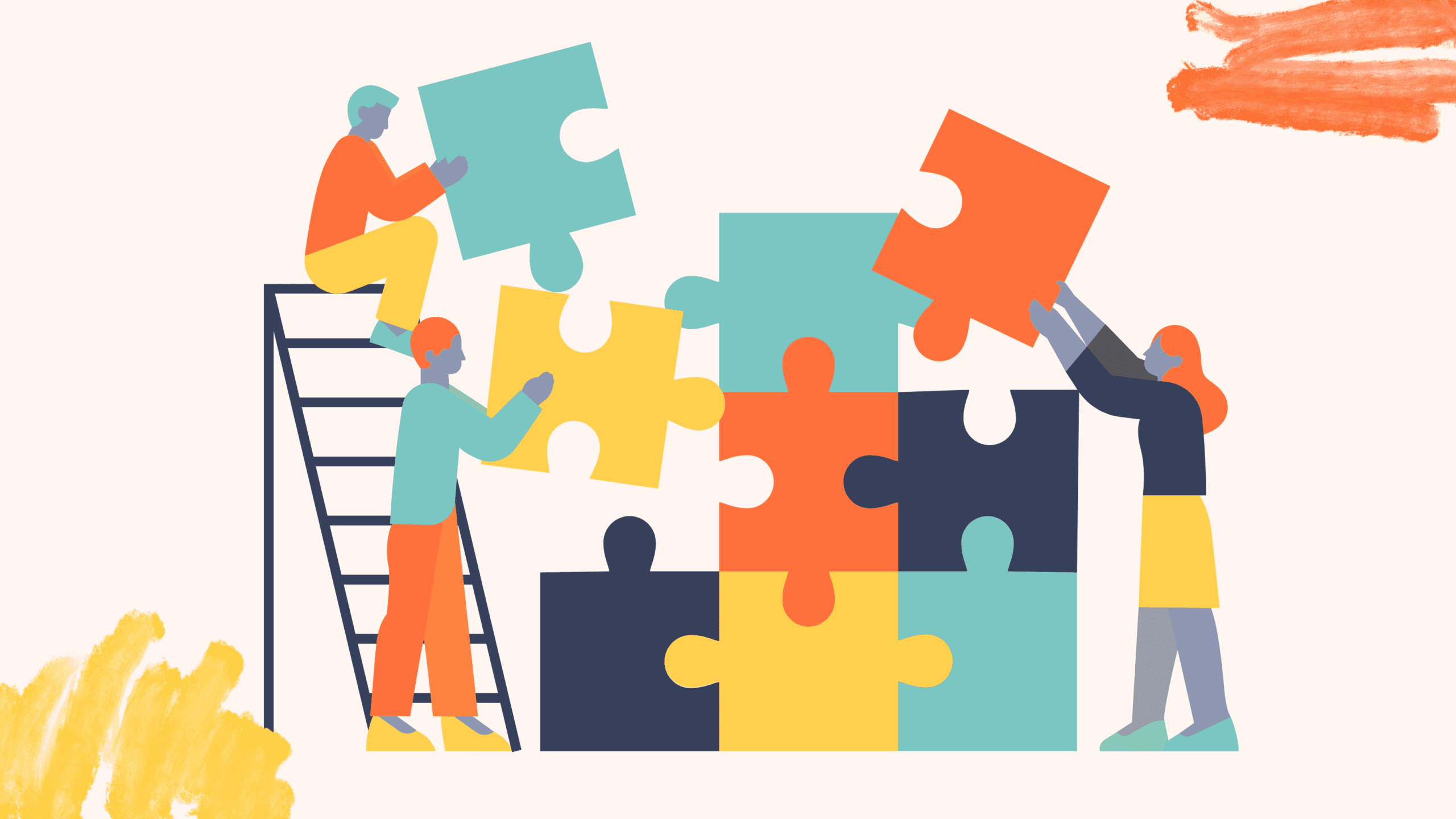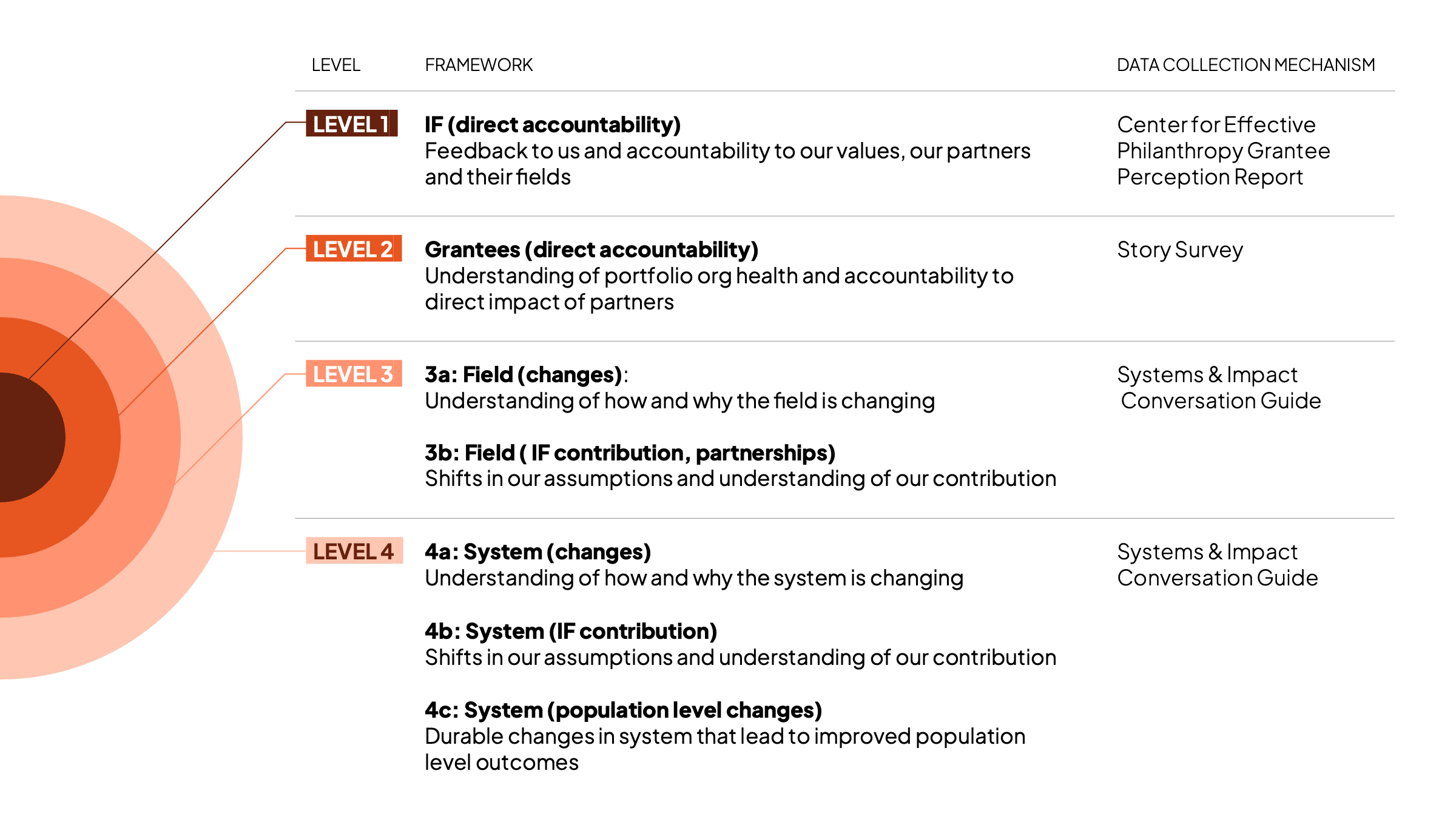Global 
From Conversations to Insights
Crafting a Data-Informed Learning Process for Measuring Systems Change

Global 
Crafting a Data-Informed Learning Process for Measuring Systems Change

When Imaginable Futures launched in 2020, we began to build a vision for the future rooted in changing systems. Systems change work is hard, but it can be even harder to measure. Why? To name a few factors: the time horizon is far, contributions can be hard to trace and the signals can be challenging to interpret.
And yet, we are committed to holding ourselves accountable — as philanthropists, collaborators, changemakers and fellow learners. This is learning that is ongoing for us, and we are excited to share how we have been thinking, creating and implementing our Systems & Impact Framework so far.
We aren’t the first funders to try to measure systems change. And so, inspired by the work of many peers and close partners, we set out to design a framework for understanding impact that would help us achieve four key goals:
We are committed to holding ourselves accountable — as philanthropists, collaborators, changemakers and fellow learners.
To bring these goals to life, we grounded our framework in the following guiding design principles:
From these goals and principles, we came up with a multi-tiered Systems & Impact Framework. We continue to evolve the framework to ensure it’s meeting the mark.
Next, the rubber met the road — putting the framework to use. How could we design a data collection process that would allow us to gather meaningful data and insights that we could measure at each level of the framework? And, how could we do that with balanced flexibility and consistency that kept our commitment to our partners and design principles at the forefront? Here’s an overview of how we’re bringing the framework to life:

We decided the centerpiece of our framework would be something we called the Systems & Impact Conversation Guide – a conversation protocol that helps us both see the changes happening in the field and system and better understand our role in those changes. The design of the guide was informed by innovations led by peer funders on oral reporting. Insights from their experiences underscored the value of an intimate, spacious, and relaxed conversation as a method for data collection.
The guide starts with a singular, wide-open question about how the system is changing, with definitions and prompts to shape the dialogue. From there, we use follow-up questions to dig deeper into specific types of systemic change. The design prioritized giving space for the dialogue to emerge and the interviewer to be responsible for ensuring the questions are answered (regardless of when the answers emerge during the interview). To ensure inclusivity, we invited feedback from partners and stakeholders during the pilot phase, refining the tool to better align with their needs and experiences.
In 2024, we used the guide to host more than 60 conversations with our partners in Brazil, Kenya and the United States. The conversations were filled with rich insights, revealing common challenges, uncovering opportunities for collaboration and deepening our understanding of the systems we aim to shift.
With the large data set collected, we leveraged an AI-guided approach to evaluate and theme the data using Bridgespan’s Field Building for Equitable Systems Change Framework. We then used an internal learning practice ritual called Systems Sensing to analyze the data. This process allowed us to translate the data into actionable insights and strategic action as quickly as possible.
That is not to say Level 1 and 2 data collection fell to the wayside, but we opted to take a lighter approach to start:
Now, nearly 18 months into this work, here’s a summary of what we’ve learned so far — both about the process and the work of trying to understand system change in a more systematic way:
At Imaginable Futures, we are committed to transforming systems and holding ourselves accountable, and our Systems & Impact Framework has been integral to upholding that commitment. We are learning out loud as we push the boundaries of systems measurement, and we invite you to do the same by sharing your insights with us.